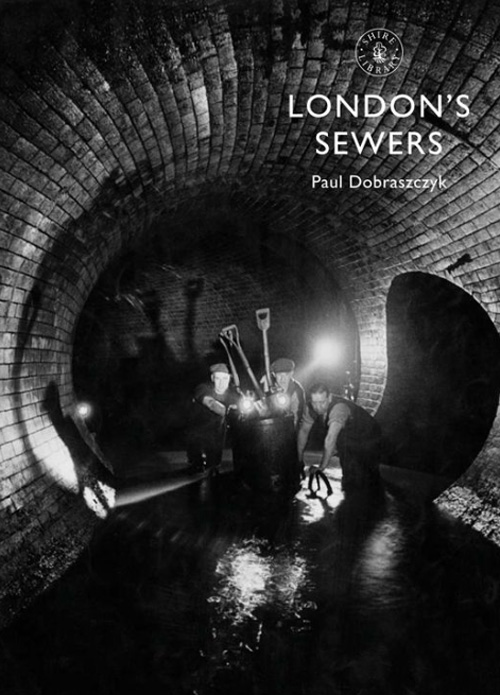London's Sewers
Review

London's Sewers, Paul Dobraszczyk, Shire Library, 2014, 64p, £6-99.
ISBN 978-0-74781-431-3.
One of the engineering achievements of 19th Century Britain was the design and construction of a unified sewage system for London. Of course it was much more than this because it began the process by which the people of London would be able to lead much healthier and hygenic lives, and it also demonstrated the scientific, engineering and architectural expertise that was available to be applied to resolving the challenge of shifting the sewage of what had reached over 3 million people by 1851.
Paul Dobraszcyk guides us carefully, with good illustrations, through the emerging problem, an uncoordinated approach to sewage disposal at best amidst a burgeoning population, to the emergence of the Metropolitan Commission for Sewers in 1847 under the leadership of Edwin Chadwick to the much more significant appointment of the surveying and engineering genius of Joseph Bazalgette. His grand scheme involving his west-east intercepting sewers, which shifted the sewage towards the tidal reaches of the River Thames, is clearly explained and evaluated, with Paul Dobraszcyk explain the technical difficulties in terms of the tidal disposal as much as celebrating its achievement.
Some interesting data emerges. The massive undertaking required 318 million bricks, with all that that would have necessitated in terms of the mass-production of bricks. One of London's important and pleasing landmarks, the Victoria Embankment, was constructed to carry a major sewage tunnel, together with a utility tunnel and capacity for what is now the District and Circle line tunnel of the first ever underground railway, being transformational and yet aesthetically pleasing. The major pumping stations at places like Crossness and Abbey Mills were cathedral-like in both their dimensions and design. Particularly with the overground constructions, Bazalgette was seriously condemned at a later stage for his expenditure because he refused to accept lower tenders if he was uncertain about the quality of the work being offered. However the quality of design has proved his wisdom, with the system that he designed still forming the basis of a sewage disposal for more than double the population that he was encountering over one hundred and fifty years later.

